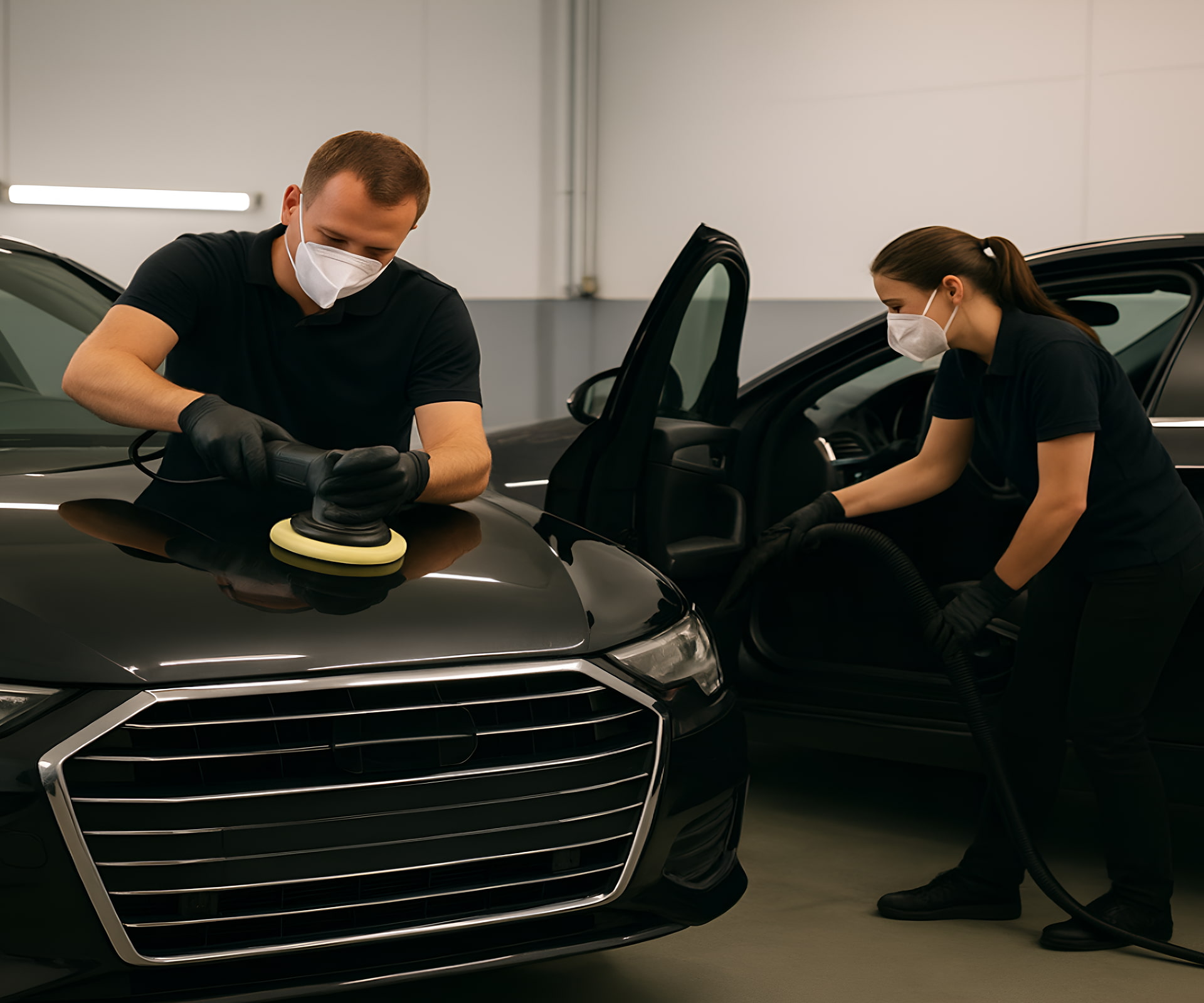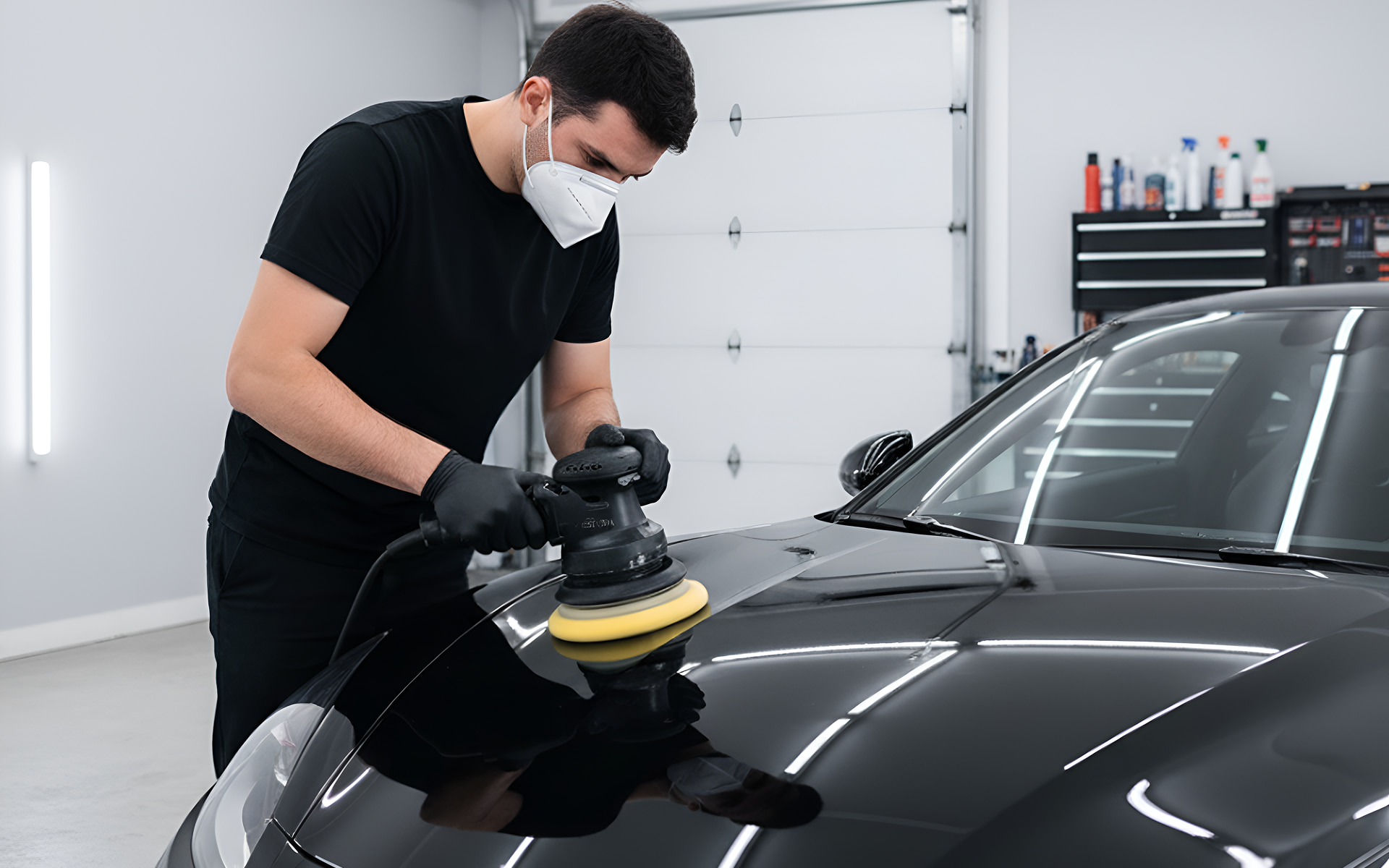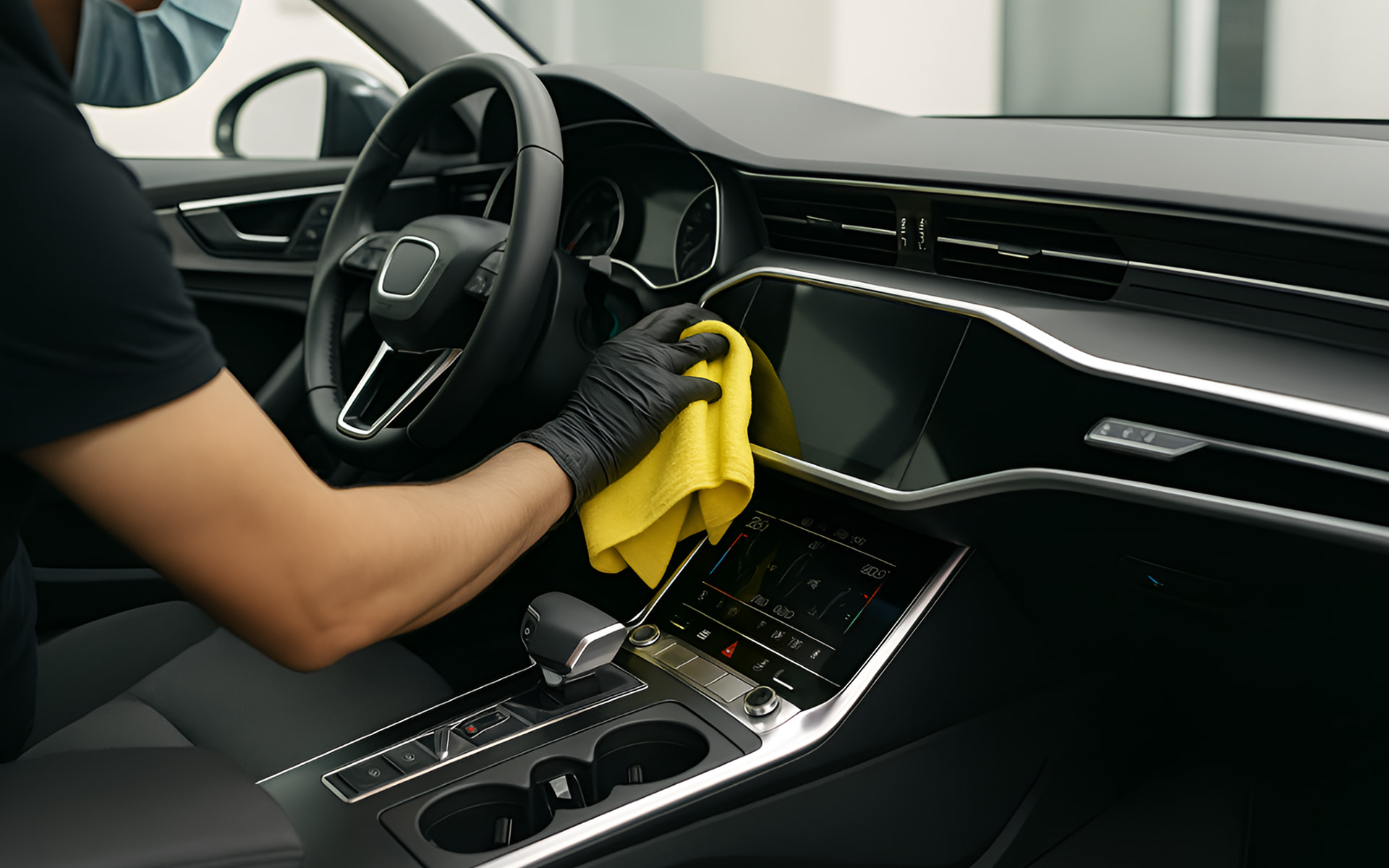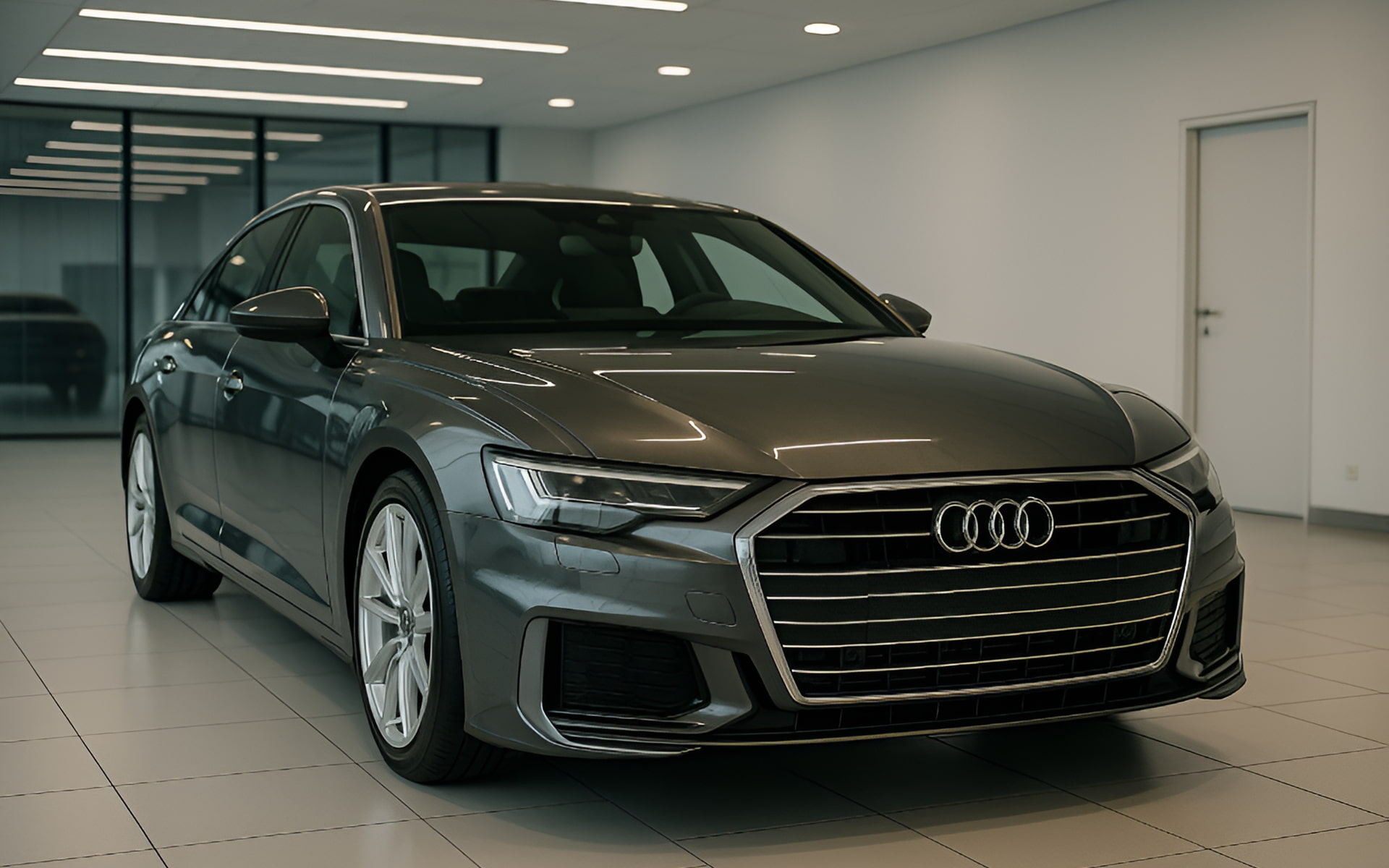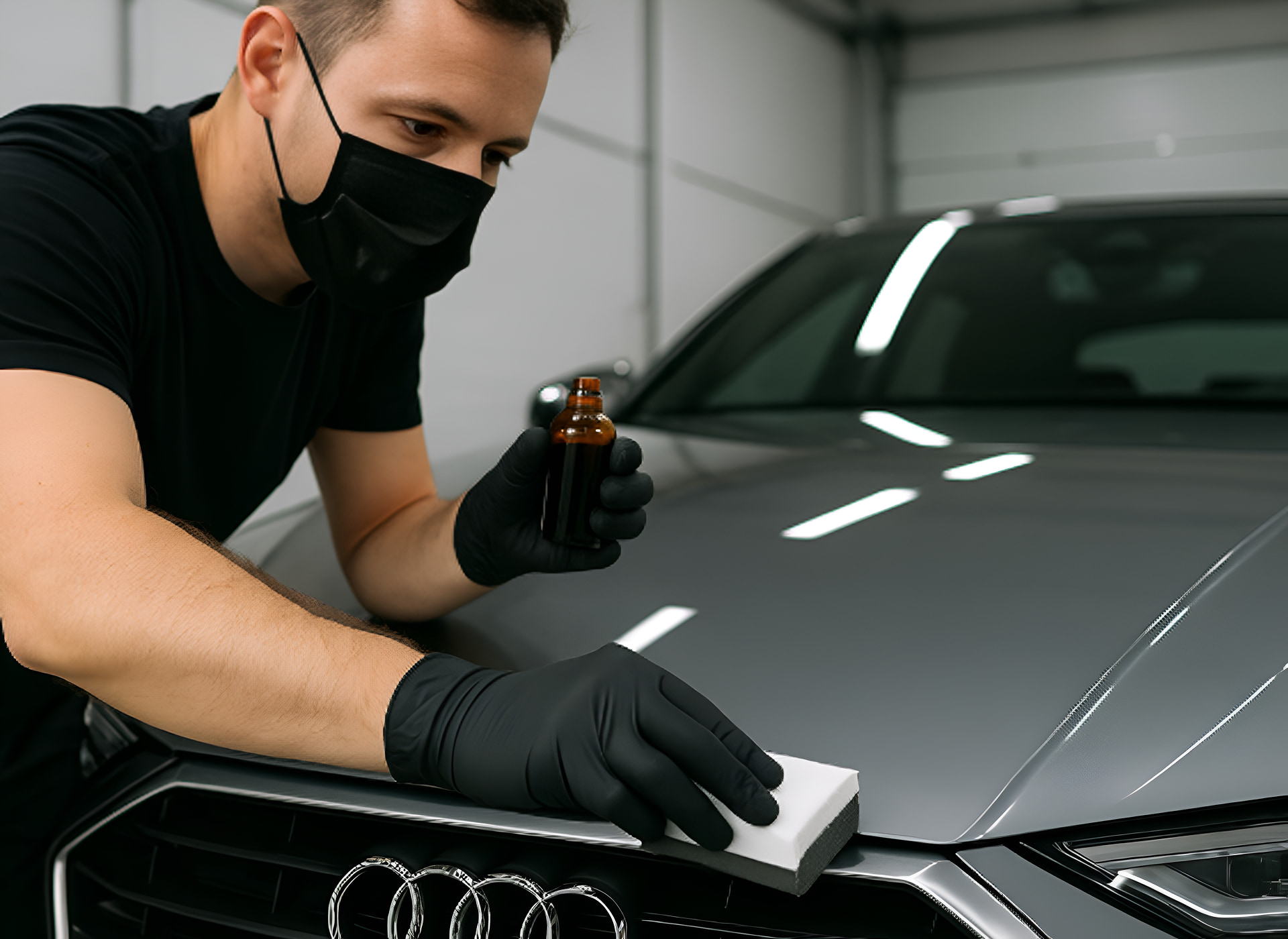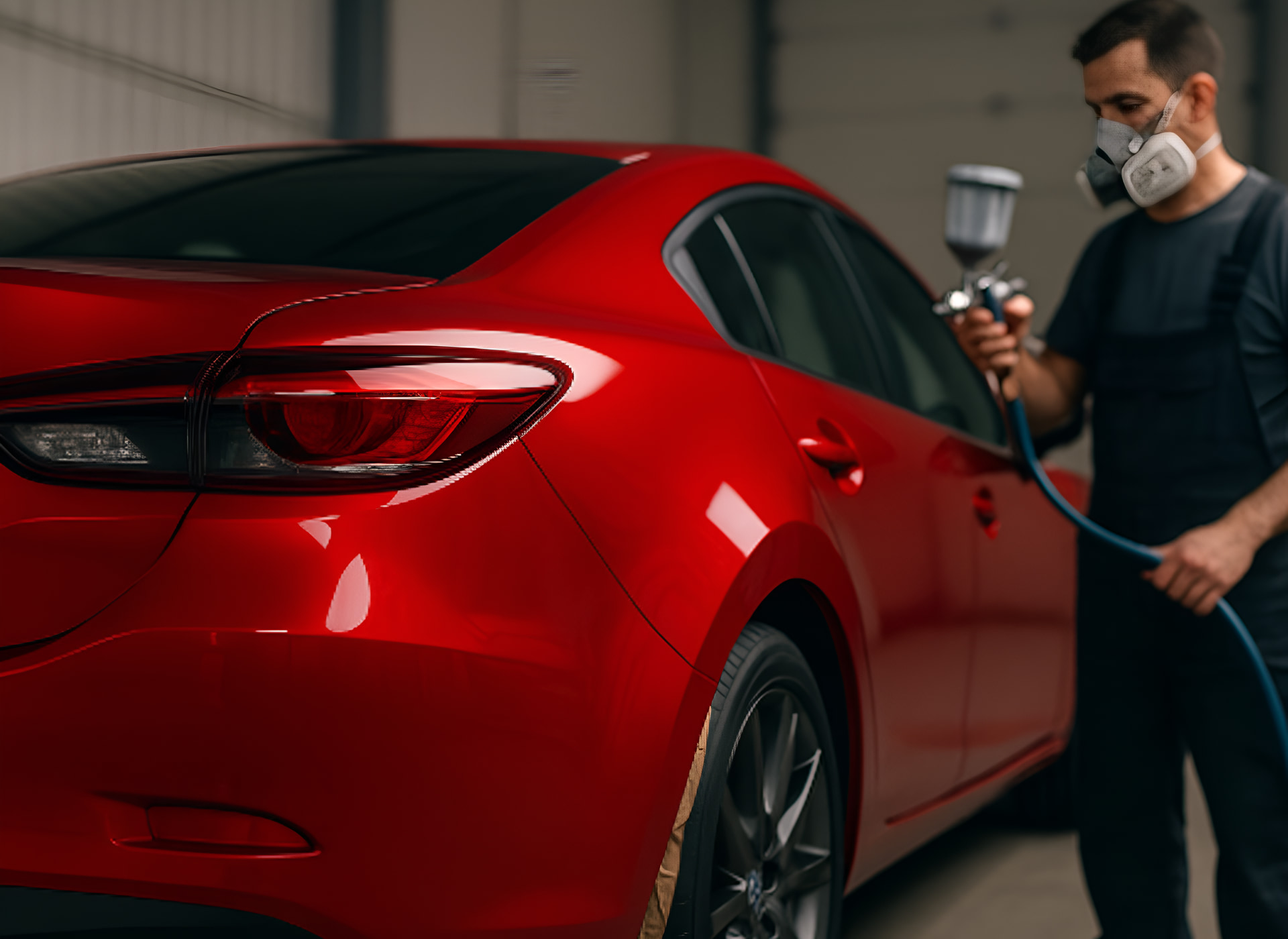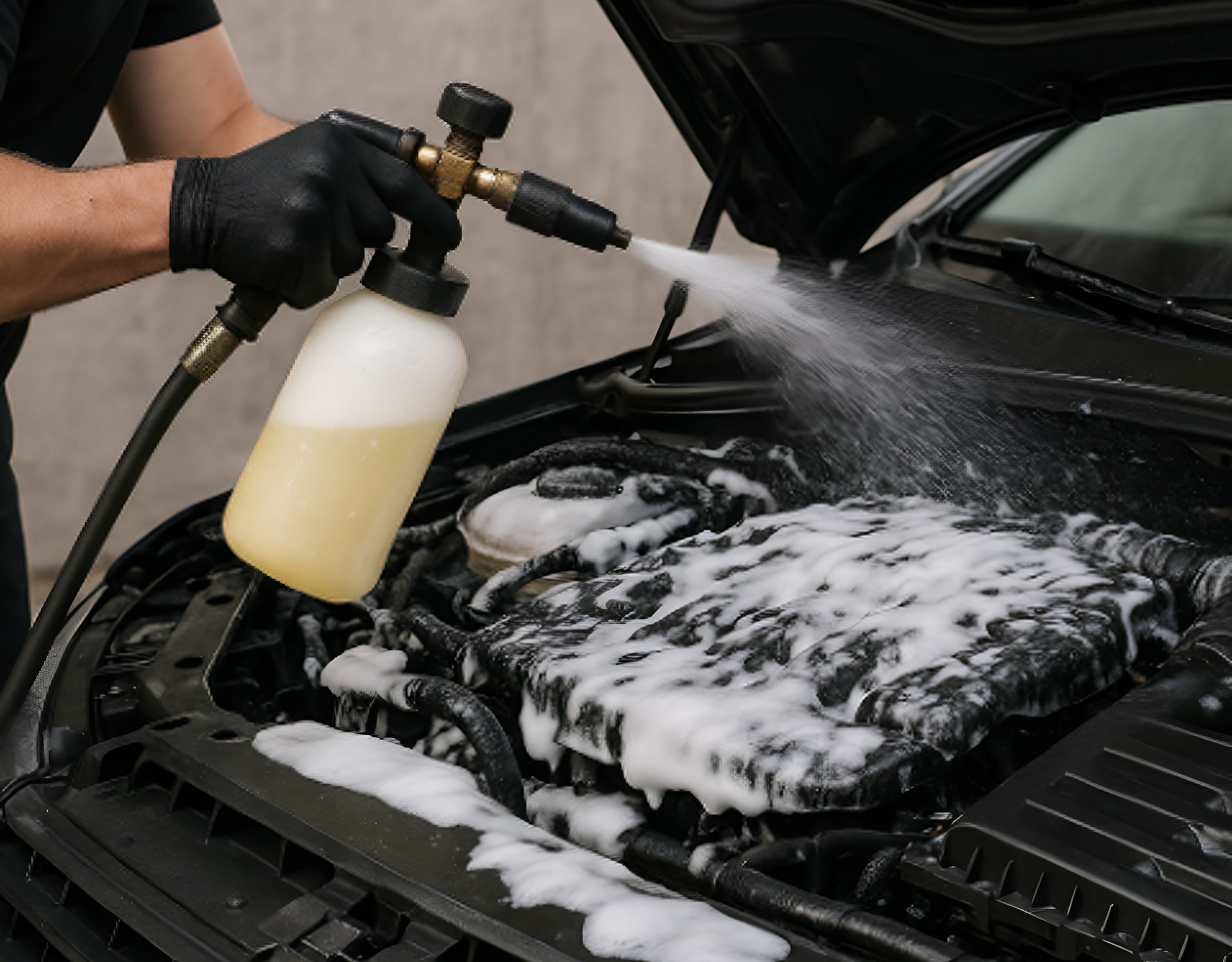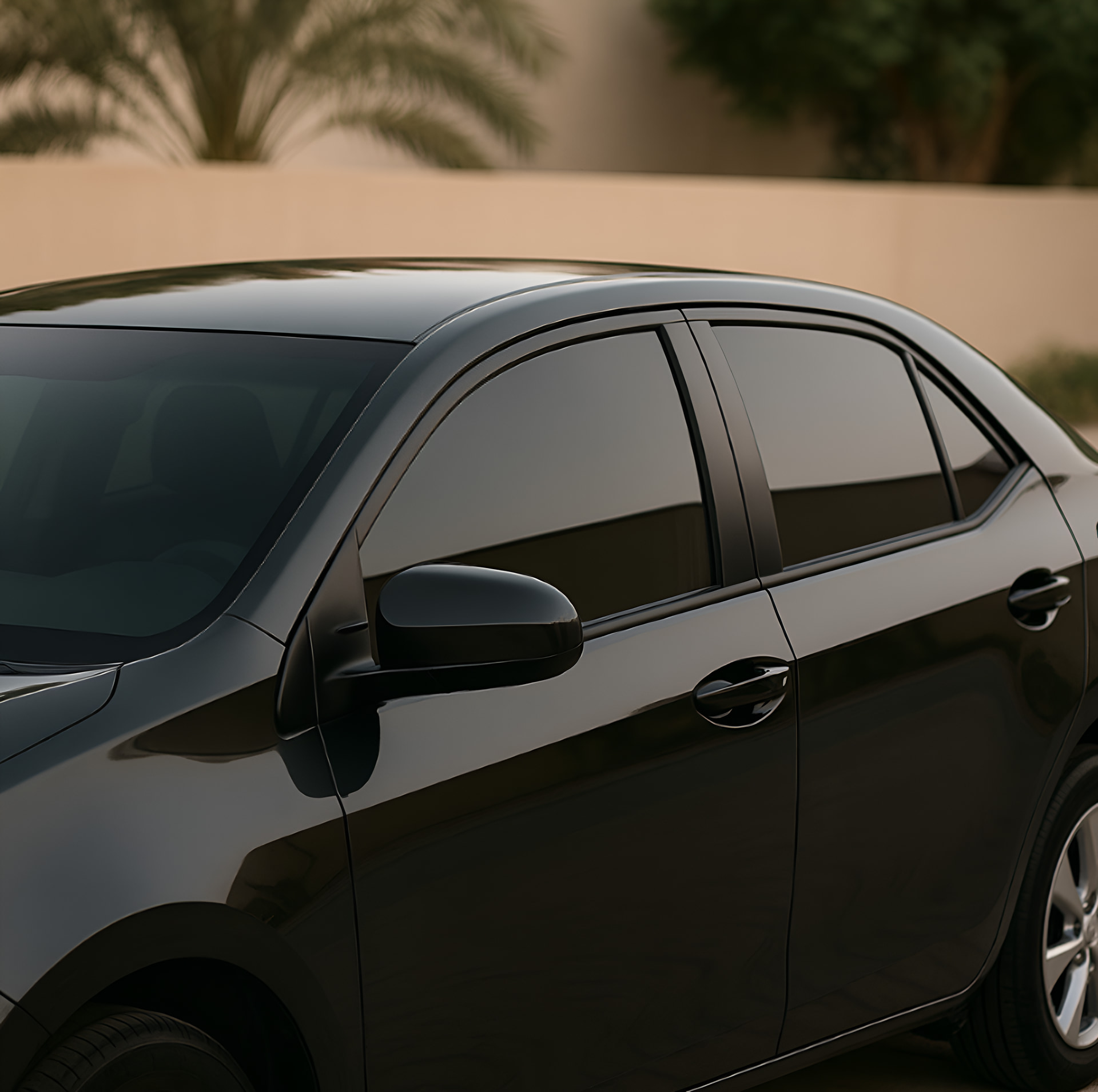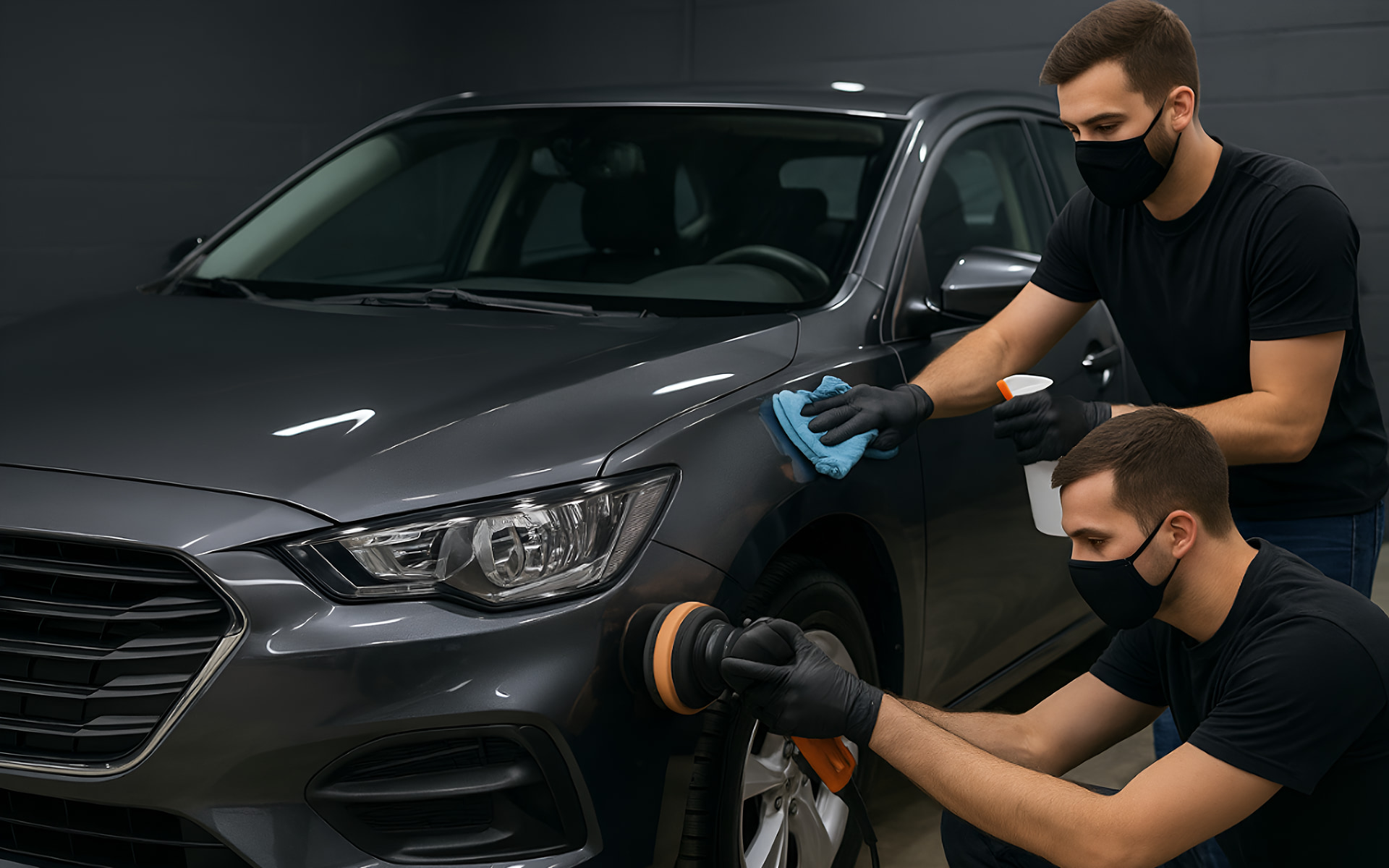Car lovers often debate the best way to keep a paint looking showroom fresh. Two standout options are paint protection film and ceramic coatings. This guide explores how each method works, how they differ, and which solution suits various vehicle types and lifestyles.
What Is Paint Protection Film (PPF) and How Does It Work?
Paint protection film is a clear, flexible urethane layer applied over painted panels. It acts like an invisible shield, absorbing rock chips, minor abrasions, and harsh weather without altering the vehicle’s color or gloss. When damaged, the self healing surface can reflow under heat, hiding light scratches.
What Is Ceramic Coating and Why Is It Popular?
Ceramic coating is a liquid polymer infused with nano ceramics. When cured, it bonds chemically to paint, forming a hydrophobic shell that repels dirt, UV rays, and chemical stains. It delivers deep gloss and makes washing easier, though it cannot stop stone chips like PPF can.
PPF vs. Ceramic Coating
Key Differences Between PPF and Ceramic Coating
At their core, PPF is a thicker physical barrier, while ceramic coating provides a thin chemical shield. Both protect paint, yet they excel in different scenarios. Knowing these differences helps owners choose wisely.
Which Offers Better Protection: Ceramic or PPF?
In daily city driving, PPF resists flying debris and parking lot dings better than ceramic coating. However, ceramic coating outperforms for UV defense and stain resistance. Those who commute on gravel roads may prefer PPF’s impact absorption.
How to Maintain and Clean PPF vs Ceramic Coating?
PPF needs occasional inspection for edge lifting but resists swirls. Ceramic coating demands gentle washing with pH neutral soap to keep its water beading magic alive. Both greatly cut down weekend polishing time.
Which Looks Better: Ceramic Coating or PPF?
Ceramic coatings enhance depth and shine, giving color a wet look. PPF can appear slightly satiny unless topped with a coating, though modern films are clearer than ever. For pure aesthetic pop, many enthusiasts layer ceramic coating over PPF.
How Long Do PPF and Ceramic Coating Last?
Quality PPF can last five to ten years with proper care. A premium ceramic coating may protect three to five years before reapplication. Environment, washing habits, and parking conditions affect outcomes for both options.
Comparing the Costs: Ceramic Coating vs PPF
PPF materials are expensive and installation is labor intensive, especially on complex bumpers. Ceramic coating is less costly upfront but may require periodic recoating. Budget minded owners might coat high impact zones with PPF and the rest with ceramic.
Best Paint Protection for Hot Climates Like Dubai
Dubai’s scorching sun accelerates paint oxidation. Ceramic coating excels at reflecting UV radiation and resisting bird dropping etching. PPF, meanwhile, blocks sand pitting on desert highways. Combining both offers full spectrum defense for harsh climates.
What’s Better for Track Cars: Ceramic or PPF?
Sports car owners who hit the track favor PPF on front ends to catch rubber chunks and high speed debris. A slick ceramic layer on top eases bug removal after racing weekends.
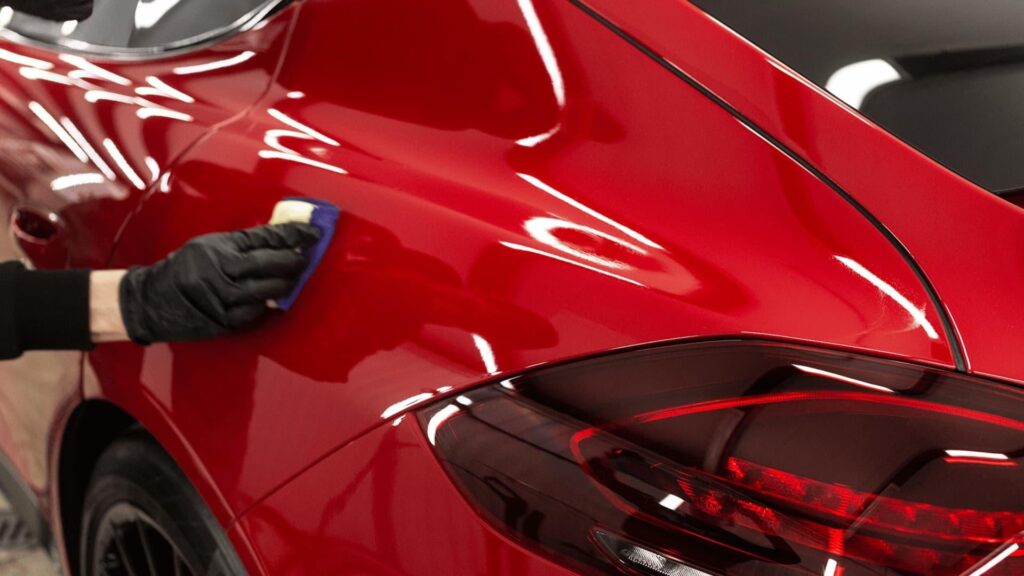
Paint Protection for Daily Drivers: PPF or Ceramic Coating?
Sedan drivers navigating crowded parking garages risk door dings and trolley scrapes. PPF covers vulnerable panels, whereas ceramic coating simplifies weekly washes. A hybrid approach balances convenience and protection.
How to Choose Between Ceramic Coating and PPF Based on Your Needs?
Ask yourself: Do you battle gravel roads or love automatic car washes? Are you chasing mirror gloss or guarding against chips? Priorities dictate the smarter investment between the two.
Environmental Benefits of Using PPF and Ceramic Coatings
Both options can reduce the need for frequent repainting, indirectly cutting paint shop chemical use. PPF is removable and recyclable in some regions, while ceramic coatings are thin enough to polish off during refinishing.
Ceramic vs PPF Summarized
Ceramic is like sunscreen and wax combined, shedding water and blocking rays. PPF is armor plating against physical hazards. Together they create a comprehensive defense no single product can match.
Conclusion
Choosing between these solutions (ppf vs ceramic coating) depends on driving habits, budget, and appearance goals. For unbeatable protection, many owners select both. When you’re ready to protect your paint, let Monza Auto Care create a plan that suits your life and keeps your car looking great for years.
Call us at +97165300005 or email monzaautocare@gmail.com. Visit us at 125 Street, Industrial Area 15, Sharjah for expert car care services today.
Frequently Asked Questions
How long does PPF generally last on a daily driver?
High quality film endures five to ten years, provided you wash gently, avoid harsh chemicals, and fix lifted edges promptly to stop contaminants from creeping underneath.
Will ceramic coating make my car completely scratch proof?
Ceramic coating resists light swirls but not deep scratches or rock chips; pairing it with film on high impact areas maximizes overall paint defense and durability.
Can I apply ceramic coating over existing PPF?
Yes, coating bonds well to film when it’s clean and decontaminated, adding gloss, hydrophobic performance, and easier maintenance without compromising the film’s self healing abilities.
Is maintenance different between ceramic and PPF?
PPF needs gentle hand washing and occasional edge checks, whereas ceramic requires pH neutral shampoos and microfiber towels to preserve the hydrophobic layer’s beading effect.
Which option offers better resale value?
Buyers appreciate a chip free front end and glossy paint; having either protection helps, yet combining both often yields the most impressive inspection results during resale.

